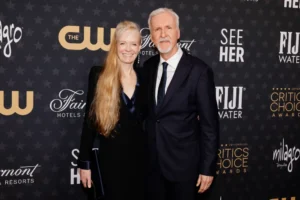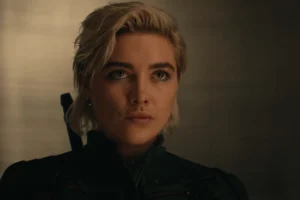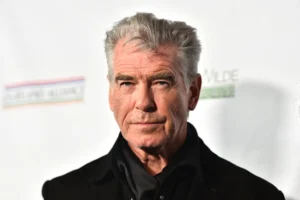by Chris Tilly
2018 has been a transformative year for film, with social and political movements, technological leaps, and new approaches to marketing and distribution fundamentally changing the industry. With the following having far-reaching consequences for how movies are made and what movies are made, as well as how we watch them.
THE NETFLIX PARADOX
Super Bowl Sunday is now as much about advertising as it is sport. With movie studios spending millions (and MILLIONS) airing trailers during the game’s ad breaks. But this year was different. As a trailer for The Cloverfield Paradox — featuring the first footage we’d seen from the film — screened early on. And concluded with the words “Coming very soon.”
They weren’t lying. Because as soon as the Super Bowl was over, the third film in the Cloverfield franchise dropped on Netflix. In a move that was deemed “unprecedented,” “groundbreaking” and “a game-changer” by both filmmakers and commentators.
The launch certainly shook things up, with Twitter practically melting down at the prospect of a new JJ Abrams-produced film being available in a matter of hours. The buzz making the launch a marketing masterstroke.
Unfortunately, the actual movie was pretty bad. And with Netflix keeping their cards close to their chest regarding numbers, we have no idea how many times the film was actually viewed. But in terms of disrupting the release schedule, and changing the way in which films are both distributed and promoted, the launch of The Cloverfield Paradox was huge.
CRAZY RICH REPRESENTATION
2018 was an important year for representation, in terms of both race, and sexuality. Disney kicked off the year with Black Panther, the first MCU movie to be fronted by an African-American. And the film became a bona fide phenomenon, grossing more than any other superhero movie ever at the U.S. box office, and grossing $1.3bn globally. Making Black Panther the ninth most successful film of all time.
Romantic comedy Crazy Rich Asians hit screens in August, and became the sleeper hit of the summer. Based on the novel of the same name by Kevin Kwan — and revolving around an American professor discovering that his girlfriend’s Singapore family are “crazy rich” — the film grossed a whopping $238m worldwide, from a budget of just $30m.
Being the first release by a major studio to focus on a gay teen romance, Love, Simon was a more modest, but no less important success. Based on a bestselling book by Becky Albertalli, and directed by Arrowverse mastermind Greg Berlanti, the movie followed closeted Simon Spier’s efforts to figure out the identity of the classmate with whom he’s fallen in love online, while also trying to avoid being outed by a blackmailer. The film cost $17m, and made $66m.
Those numbers don’t lie, proving that audiences want to see more diversity and better representation onscreen, and hopefully paving the way for true change.
CINEMAS BECOME A QUIET PLACE
Movie theatres can be grim venues, filled with the noise of chatter, phones and rustling wrappers and popcorn. But this year, for 90 minutes, audiences were forced into silence. Thanks to A Quiet Place.
The hugely successful horror film — directed by John Krasinski — takes place in a post-apocalyptic world where a family is forced to live in silence to avoid being eaten by noise-sensitive monsters.
Meaning that — to fully appreciate the conceit — audiences also had to sit in silence. With that collective effort to stay quiet heightening the reality, increasing the tension, and helping to make A Quiet Place maybe the most effective horror movie of 2018. And the best thing to happen in movie theatres for years.
THE INCLUSION RIDER SHAKES THINGS UP
Frances McDormand in Three Billboards Outside Ebbing, Missouri, for which she won the Oscar.
When Frances McDormand said the words “Inclusion Rider” during her Three Billboards Oscar acceptance speech in March, it sent something of a shock-wave through the film industry. Speaking to press backstage, she explained, “It means that you can ask for and/or demand at least 50% diversity, not only in casting, but also [in] the crew.”
Media researcher Stacy Smith came up with the concept — alongside civil rights attorney Kalpana Kotagal and producer and actor Fanshen Cox DiGiovanni — to ensure proper representation for women, people of colour, the LGBTQ community, and those with disabilities. It was outlined in a Hollywood Reporter op-ed in 2014, while Dr. Smith described it during a 2016 TED Talk thusly…
“The typical feature film has about 40 or 50 speaking characters in it. I would argue that only eight to 10 of those characters are actually relevant to the story. The remaining 30 or so roles, there’s no reason why those minor roles can’t match or reflect the demography of where the story is taking place. An equity rider by an A-lister in their contract can stipulate that those roles reflect the world in which we actually live.”
And while change like this — behind the camera as well as in front of it — takes time, there’s already been movement within the industry. Industry bigwig Ari Emanuel introduced the idea at WME, asking his agents to support the concept by explaining its benefits to the firm’s clients when negotiating deals. And Warner Bros. became the first major Hollywood studio to adopt the policy. Kicking off with Michael B. Jordan movie Just Mercy.
“Inclusivity has always been a no-brainer for me, especially as a black man in this business,” Jordan explained in a statement. “It wasn’t until Frances McDormand spoke the two words that set the industry on fire — inclusion rider — that I realised we could standardise the practice.”
He added, “This is a legacy-bearing moment.”
PETER JACKSON REVOLUTIONISES THE DOCUMENTARY
They Shall Not Grow Old was a labour of love for director Peter Jackson. A WWI documentary about British soldiers fighting on the Western Front, Jackson took 100-year-old footage and modernised it by colourising, constructing missing frames, and employing lip-readers to figure out what the soldiers were saying, and voice actors to bring their words to life.
As Jackson explained at the film’s London premiere: “I wanted to reach through the fog of time and pull these men into the modern world so they can regain their humanity once more.”
Peter Jackson’s film was a towering technical achievement.
The results are jaw-dropping, the combination of ancient filmmaking techniques with modern technology reaching through that fog, and giving voice to a generation that’s long gone.
Jackson believes that this is just the beginning. They Shall Not Grow Old features footage supplied by the Imperial War Museum, and there are archives all over the world filled with film that could benefit from the same process. Bringing the past to life so audiences can witness history as never before.
OK, this one might not have changed the film industry. Yet. But it’s a campaign that we’ve kicked off here at Fandom, and an issue that’s close to Editor Kim Taylor-Foster’s heart…
“For too long, female nudity has outweighed male nudity on screen – not just in the volume of women we see fully naked or partially nude but also in the way female versus male bodies are shot,” Taylor-Foster explains. “#BallsForBoobs seeks to balance that inequality. I’m all for nudity – we should all be far less prudish – but that means that alongside freeing the nipple, we need to free the ‘nad too. Tit for tat and all that.
“#BallsForBoobs proposes that for every bare breast seen on screen, we get a naked nut-sack too. Matching sack for every rack shown is a step closer to eliminating objectification, and a win for equality.”
















+ There are no comments
Add yours